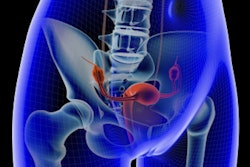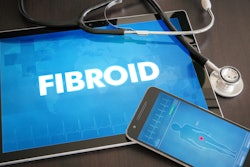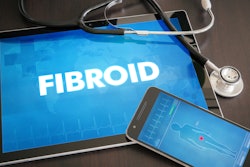More than 50% of women diagnosed with uterine fibroids are offered a hysterectomy, while fewer than 20% are presented with less invasive options, according to a survey published July 9 by the Society of Interventional Radiology (SIR).
The survey also found that about 17% of women mistakenly think that a hysterectomy is the only treatment option for uterine fibroids. The SIR published survey results in its latest resource guide, “The Fibroid Fix: What Women Need to Know,” which also highlighted the potential of uterine fibroid embolization (UFE) as a treatment.
“The data serve as a guiding light for improving physician and patient educational efforts on various treatments to ensure all women, regardless of background, are informed about their risks and the full range of treatment options available," said SIR President Robert J. Lewandowski, MD, in a society statement.
Many women are at risk of developing uterine fibroids, with up to 77% developing them in their lifetime, according to the SIR. Furthermore, previous research suggests that fibroids disproportionately affect Black women, who have the highest incidence.
UFE has been proposed in recent years as a less invasive treatment method for uterine fibroids, with previous studies suggesting it can reduce heavy menstrual bleeding, relieve uterine pain, and improve energy levels. For UFE, an interventional radiologist makes a small incision in the wrist or thigh and inserts a catheter to block nonessential blood vessels that lead to the fibroids, causing the fibroids to shrink or disappear.
The SIR utilized the Harris Poll to conduct the online survey over a four-day period in May and June, which included 1,122 U.S. women ages 18 and older. Of the total women who participated, 167 had personally been diagnosed with uterine fibroids.
The survey found that despite up to 77% of adult women developing uterine fibroids, 72% do not know they are at risk.
Also, among women who have heard of or are familiar with UFE, 40% first heard or learned about this treatment method from a healthcare provider. Another 33% reported first hearing of it from friends and family while a combined 29% first heard of it from advertising or their own research.
The study also reported the following findings:
- 56% of women ages 18 to 34 years and 51% of women ages 35 to 44 years say they are not familiar with or never heard of uterine fibroids.
- 50% of Hispanic women say they have never heard of or are not familiar with uterine fibroids, compared to 37% of Black women.
- 36% of Black women and 22% of Hispanic women mistakenly think they are not at risk for developing fibroids. Uterine fibroids are three times more common in Black women and two times more common in Hispanic women, according to the SIR.
- For choosing a treatment option, the most important aspects for women would be that it cures the fibroids so they do not recur (48%) and has proven effectiveness (46%).
The SIR called the findings “alarming” and highlighted that bucking this trend begins with physicians who have the ability and obligation to inform their patients of all available treatment options.
“Every woman’s symptoms are different, as are the factors in her life that will be impacted by the treatment she chooses,” the SIR said in its guidance. “Ensuring that women have the complete information they need to make the right decision about treatment is vital to providing the best care possible. That includes educating women about treatments beyond hysterectomy or other surgical options.”
The full survey and guidance can be found here.



















